Choosing the right charging cable can be a hair-raising affair – especially when you are just setting out in the world of e-mobility. This comprehensive guide provides you with the key factors so that you can choose the charging cable that’s right for you whether you own an electric car, a plug-in hybrid or an electric motorcycle.

Why should I buy a charging cable?
There are all sorts of reasons why you should get yourself equipped with a charging cable:
- to be able to hook up to public charging stations;
- to have a charging cable that you can leave at home connected to its wallbox, so you don’t have to get the cable provided with the car out of the boot each time;
- to replace a faulty or damaged charging cable;
- or quite simply to remedy the situation if your EV is delivered without a charging cable – which happens more often than you might think.
The aim of this guide is to help you select the right cable depending on your particular needs and your vehicle.
⚠️ Please note: In this guide, we will only be talking about AC charging (alternating current). DC charging stations (direct current), which are usually rapid charging stations always have a tethered cable. So you don’t need to be equipped with a cable to plug into these charging points.
The main criteria for choosing a cable
To choose the right cable for you, you need to take into account the vehicle type and its charging capacity. More precisely you need to know the maximum charging capacity in AC (alternating current) – but we’ll come back to this a bit later on.
The criteria which will enable you to select your charging cable from the range on offer are as follows:
- The car-side connector type
- The infrastructure-side connector type
- The desired charging capacity
- Single-phase or three-phase
- The cable length
- Spiral or straight cable
We will look at each of these points in depth in the following sections.
The car-side cable
First of all, you need to know what type of connector has been fitted on your EV. Most modern cars are equipped with a Type 2 connector – this is now the European standard. It may be “integrated” in a Combo connector.

EV with Type 2 Combo CCS footprint

Charging cable with plug for electric vehicles Type 2
Older models, especially Asian makes (Nissan, Mitsubishi etc.), may well be equipped with a Type 1 connector.

EV with Type 1 footprint

Charging cable with plug for electric vehicles Type 1
Some EVs may also be equipped with a CHADEMO connector, but you should note that there is no charging cable on the market compatible with the CHADEMO charging norm (DC).
⚠️ Nota bene: for lightweight EVs such as the Renault Twizy and Citroën AMI, a domestic socket is already on the end of the cable tethered to the vehicle. In cases like this, you won’t find a cable, but you can find Type 2 adaptors for domestic sockets so that you can charge your EV at AC charging stations.
👉 To summarise, you must know whether your vehicle uses a Type 1 or Type 2 connector in order to select the right cable. In 90% of cases, it will be Type 2. If you have any doubts, select the make of your vehicle on the Mister EV website and you will see what cables are adapted to your EV.
The infrastructure-side connector type
The next point to take into account when choosing your cable is the type of connector into which you want to plug in your EV. In the vast majority of cases, it will be a Type 2 connector on the charging station side – which looks much like a socket on the infrastructure side. This is what most AC charging stations are fitted with, whether they are public charging stations or wallboxes installed at home.
In rarer instances, you may come across charging stations belonging to an older generation which may be equipped with Type 3 connectors. These charging stations are slowly disappearing, but as many drivers don’t have the right cable to use them, they have the advantage of often being available for charging operations.
Nota bene: A “Mode 3” cable refers to all charging cables on the market that can charge an electric car at a power rating spanning from 3.7kW to 22kW AC. The term is frequently used by electric car makers to designate the charging cable on the charging station and can be confused with a Type 3C cable. In fact, Type 3C refers to the name of the 3C connector, whereas the term Mode 3 cable covers all the charging solutions enabling you to charge at a normal or fast speed (T2/T2, T1/T2, T2/T3C, T1/T3C etc.). To find out more about Mode 3 charging, consult our guide to Mode 3 charging for electric vehicles.
For more information on Mode 3 charging, see our guide to Mode 3 charging for electric cars.
💡 Tip: To view the charging points in your vicinity, you can use the Chargemap app and add a filter to display charging stations according to connector type.
If you wish, you can also charge from a domestic socket or a heavy-duty domestic socket such as Green-up.
👉 In short, you have to decide whether you want a cable to plug into a Type 2 or Type 1 connector or a domestic socket.
Once you have determined the connector type on both the infrastructure side and the car side, you know what cable you need to purchase:
- A Type 2 → Type 1 cable
- A Type 2 → Type 2 cable
- A Type 3 → Type 1 cable
- A Type 3 → Type 2 cable
- A domestic socket → Type 1 cable
- A domestic socket → Type 2 cable

The desired charging capacity
We’re going to get a bit more technical here, but it’s necessary to understand this topic in order to purchase the appropriate cable and not be disappointed with the charging speed you obtain at charging points once you have made your purchase.
One of the reasons why people buy a charging cable is to open up the possibility of charging at a higher power rating, which means you can top your EV up faster.
However, you need to understand that the power rating is limited by your EV’s charging capacity, the capability of the cable and the power rating at the charging point. The most common AC power ratings are 3kW, 7kW, 11kW and 22kW.
💡 It is important not to confuse your car’s charging capacity in AC with its charging capacity in DC. In DC (direct current) the charging capacity rating is often higher than 50kW, which you cannot attain with AC (alternating current) where the maximum is set at 22kW.
Charging capacity determines the charging time. Here are a few examples depending on your battery capacity and the power rating:
| Battery capacity | Wallbox 3,7 kW | Wallbox 7 kW | Wallbox 22 KW |
|---|---|---|---|
| 20 kWh | 5:30 | 3:00 | 1:15 |
| 30 kWh | 8:00 | 4:30 | 1:30 |
| 40 kWh | 11:00 | 5:45 | 2:00 |
| 50 kWh | 13:30 | 7:00 | 2:30 |
| 60 kWh | 16:15 | 8:30 | 3:00 |
| 70 kWh | 19:00 | 10:10 | 3:30 |
| 80 kWh | 21:45 | 11:30 | 3:45 |
| 90 kWh | 24:30 | 13:00 | 4:30 |
| 100 kWh | 27:00 | 14:15 | 5:00 |
Single-phase or three-phase
This is another technical issue, but after this one, we’ll stop going on about the ins and outs of electricity – promise! Most households are equipped with a single-phase power supply, but some households are wired-up in three-phase. Likewise, some charging stations are powered in single-phase and others in three-phase. And some EVs can only take single-phase, whereas as others can accept three-phrase. In short, there’s a whole array of options out there.
Three-phase means you can charge more rapidly. However, all the equipment must be able to take three-phase for this to work: your electrical power supply, the charging station, the charging cable and the EV’s on-board charger. If any one of these items cannot tolerate three-phase, you will be charging in single-phase.
| Single-phase | Three-phase | |
|---|---|---|
| Power in 16 amps | 3 kW | 11 kW |
| Power in 32 amps | 7 kW | 22 kW |
Single-phase cables tend to be a little less expensive that three-phase cables. They also boast the advantage of being more flexible and lighter, thereby making handling easier. If you only want to charge from single-phase, for example your car can’t take three-phase, you can opt for a single-phase cable.
In all other cases, we advise you to go for a three-phase cable, which will be far more versatile. Even if your present car can’t take three-phase, you won’t need to buy a new cable if you move on to a three-phase car in the future.
Cable length
One last point helping you to make the right choice is the cable length. This varies taking into account the location of the charging station, the position of your EV’s charging port and the size of your car.
If you are buying a cable to charge at home and the charging point is right next to your charging port, you can no doubt opt for a cable measuring 2 or 3 metres.

If you want to charge a small car at public charging stations, a 5-metre cable is sufficient to charge whatever the configuration. On the other hand, if you have a big electric SUV, you should opt for a 7-metre cable.

If you are thinking ahead, maybe you should go for a comfortable cable length that you will also be able to use easily with another electric vehicle (second car, or when you change over to a new car).
⚠️ You should also note that it is highly inadvisable to use extension cords to charge a vehicle. So you cannot purchase an “extension cable”.

Finally, you might like to know that Mister EV markets cables of lengths varying between 2 and 15 metres to meet your specific needs. They provide you with an optimum charging capacity whatever the cable length.
Spiral or straight cable?
There are two cable variations currently available on the market:
Spiral (or coiled) cables
Spiral cables look a bit like a phone cord, but this type of cable is not necessarily the best option for charging an EV. On the plus side, it can be stretched out to reach your EV or the charging station more easily. However, the length of the cable will be much longer than a straight cable, which makes it heavy and difficult to handle when you want to store it away in a bag or the boot of your car. And it is more expensive to buy than a straight cable since it is manufactured to a greater length.

Straight cable
The main asset of straight cables is that you can simply coil them up like a hosepipe, which means you save a lot of room in your boot. You can also simply unwind it from the EV to the charging point without indulging in advanced gymnastics to stretch it out. Make sure you select the right length when you purchase it as it is not made of elastic!

💡 While it is true that most straight cables are lighter than spiral charging cables, the weight of straight cables varies depending on the material used in their manufacture. Furthermore, the quality of straight or spiral cables is clearly visible in terms of their robustness over time. Some cables tend to deteriorate making the cable cracked and porous.
In a nutshell
Choosing the right cable for your electric car is an essential step towards ensuring a smooth, efficient charging experience. If you keep in mind the key criteria such as the connector type on board the vehicle and on the infrastructure, the desired charging capacity, the cable length and the choice between a spiral or a straight cable, you will be in a position to choose a cable that corresponds to your particular needs.
At Mister EV, we propose a broad range of top-quality charging cables that are adapted to all types of electric vehicles and plug-in hybrids. Please do not hesitate to contact us if you have any questions or doubts about which cable to choose!
To go further
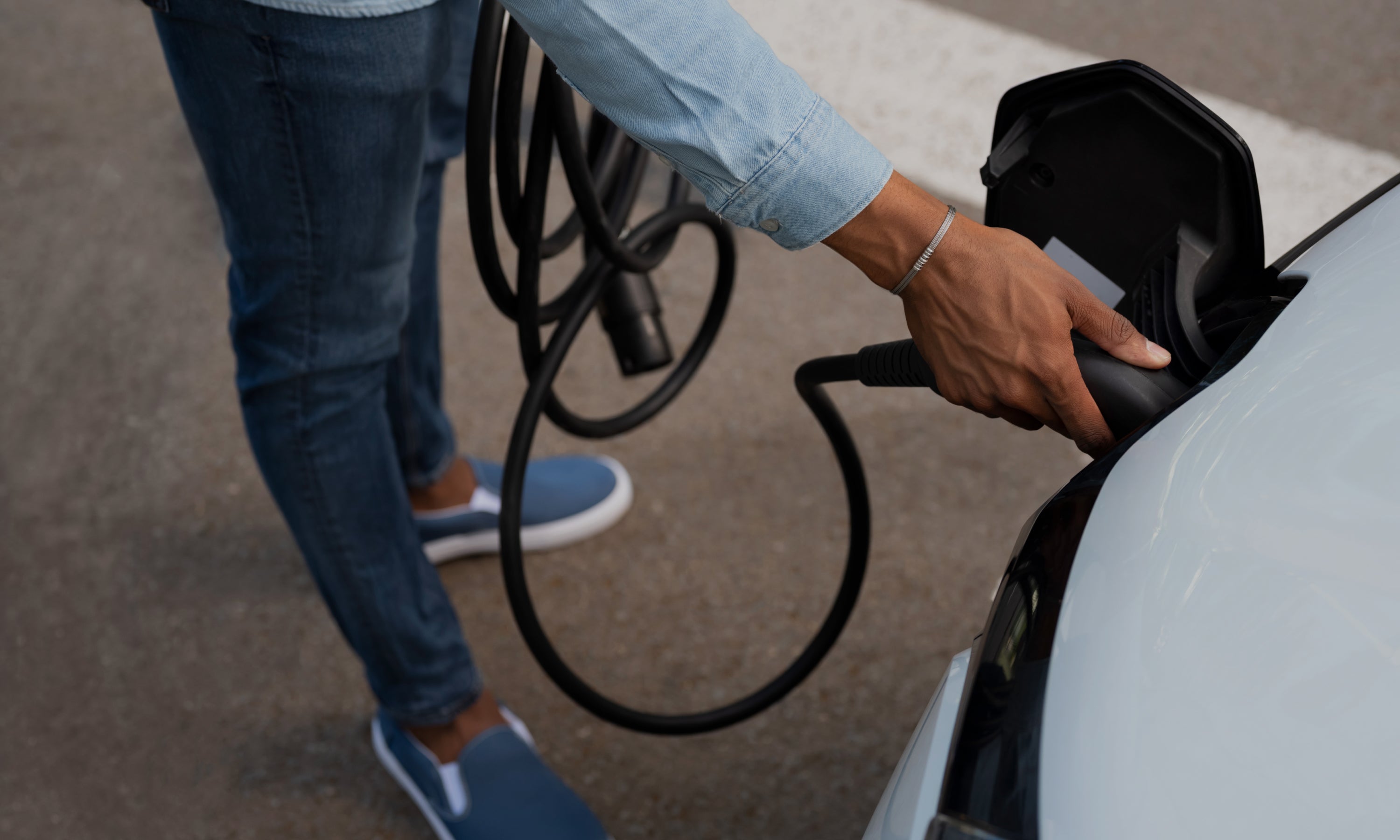

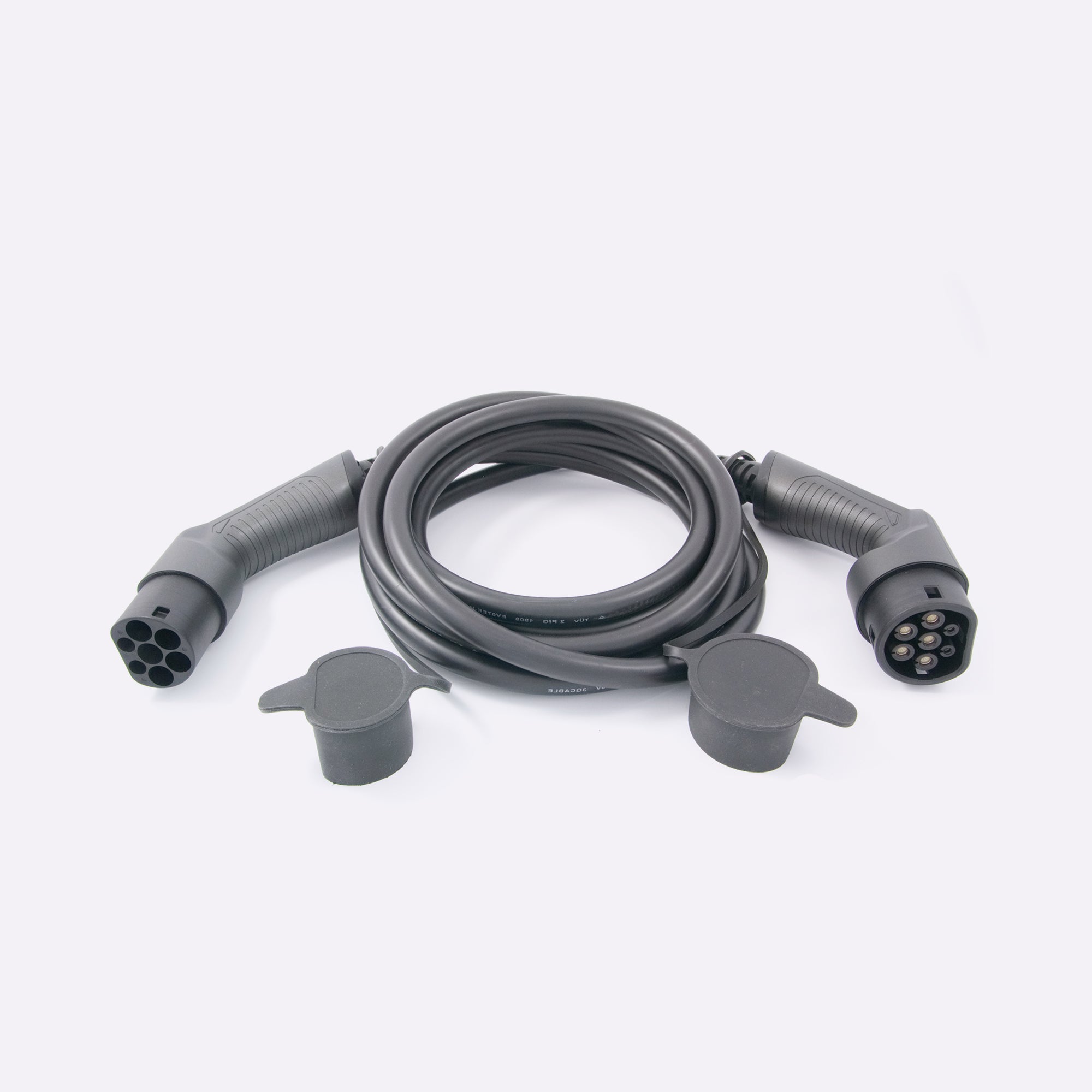
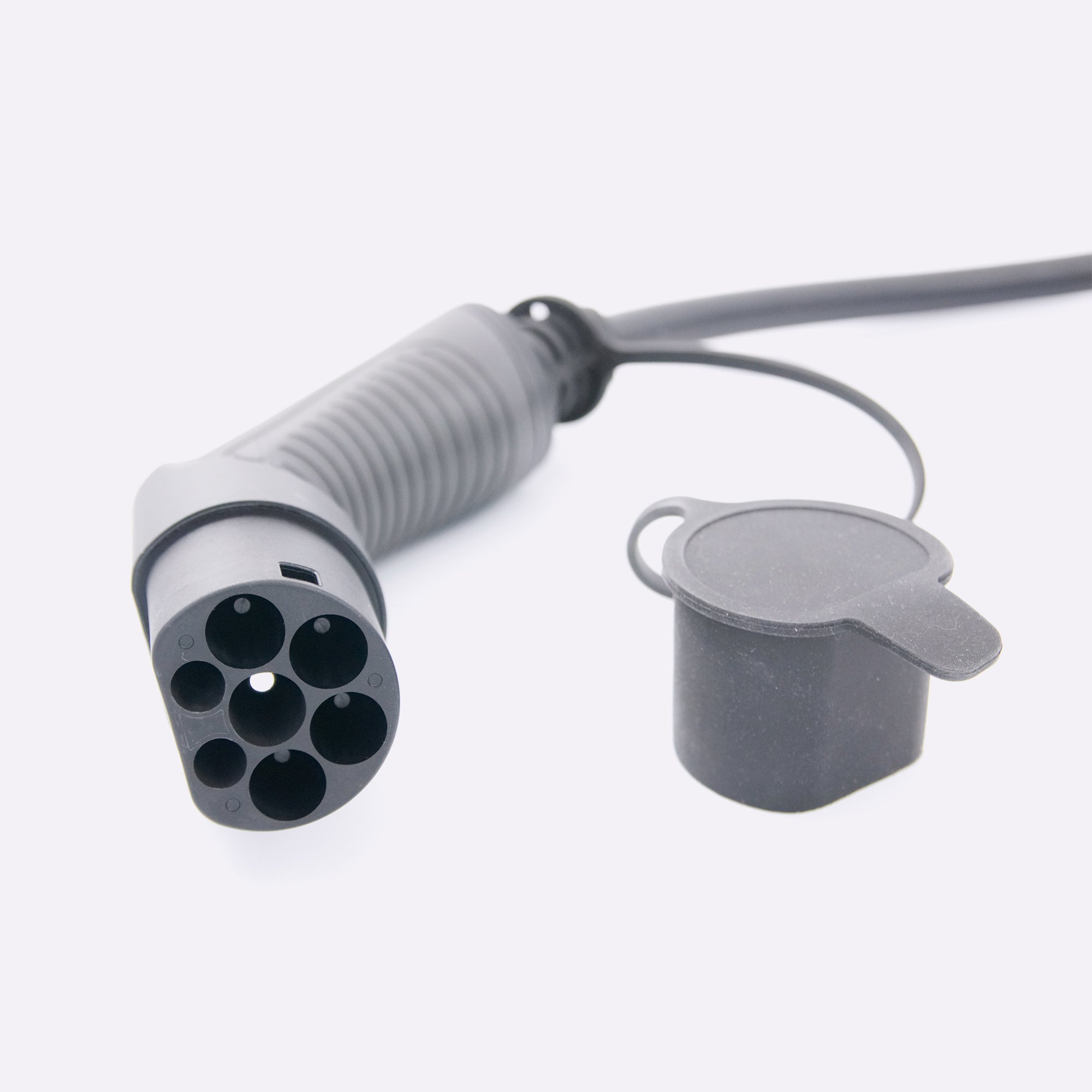
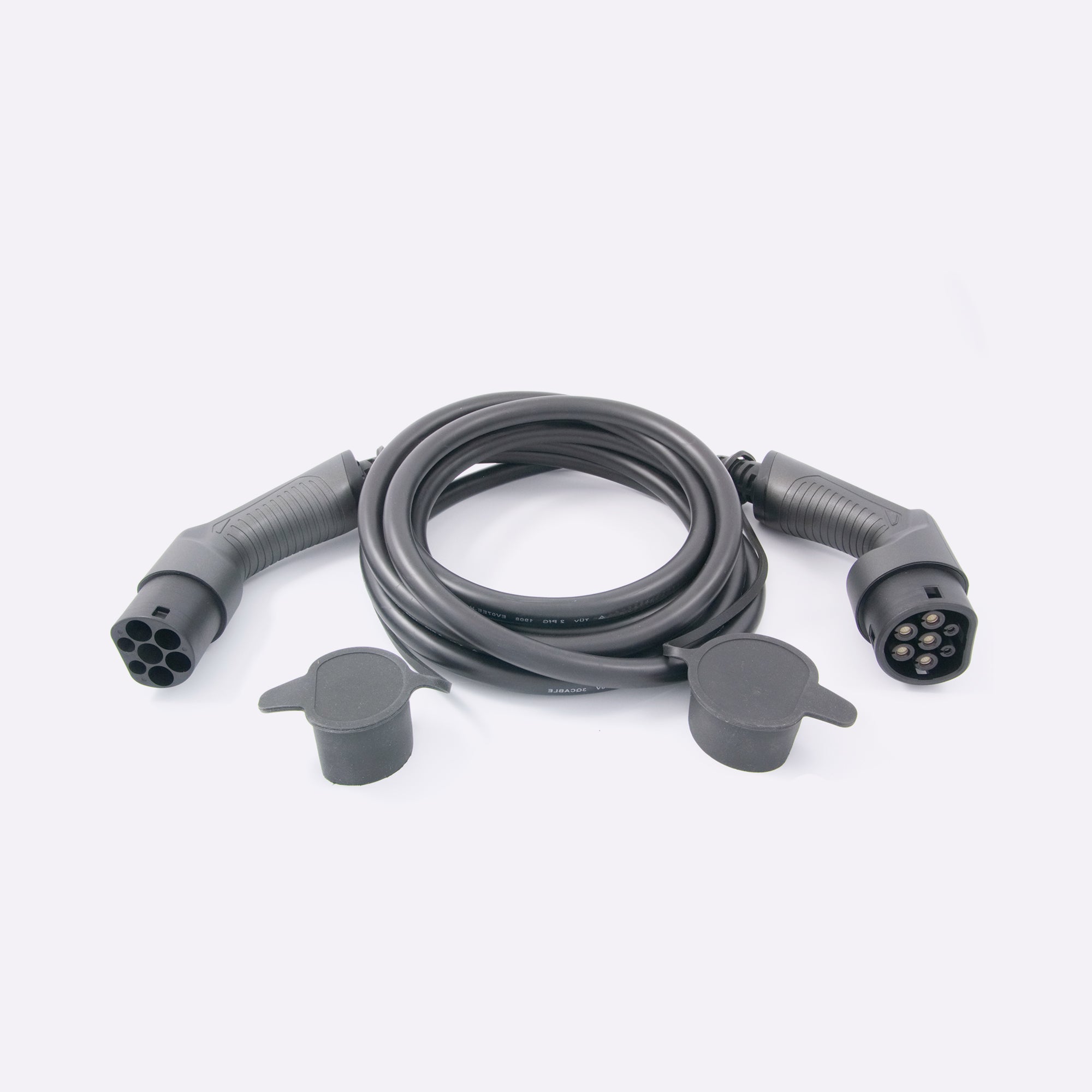
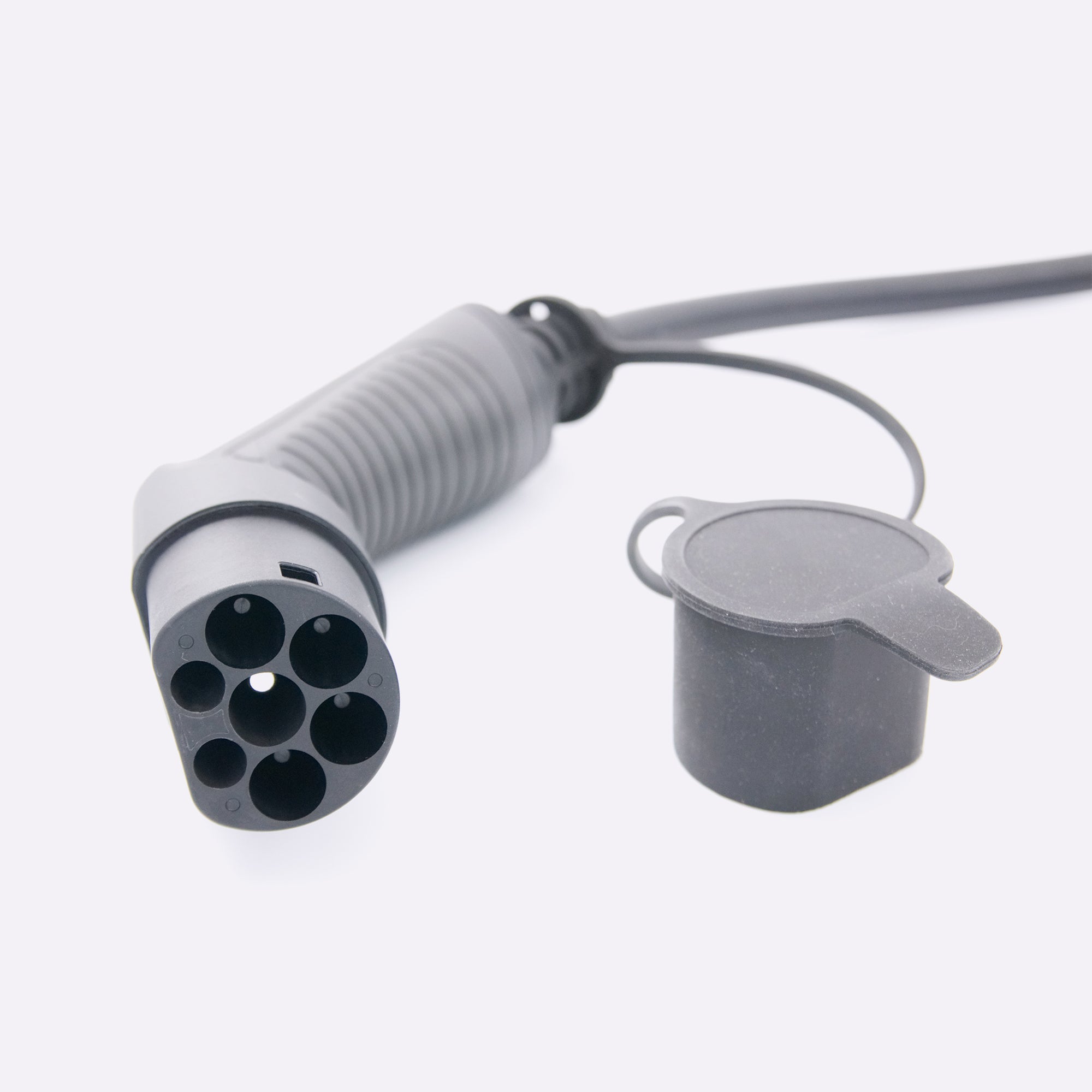
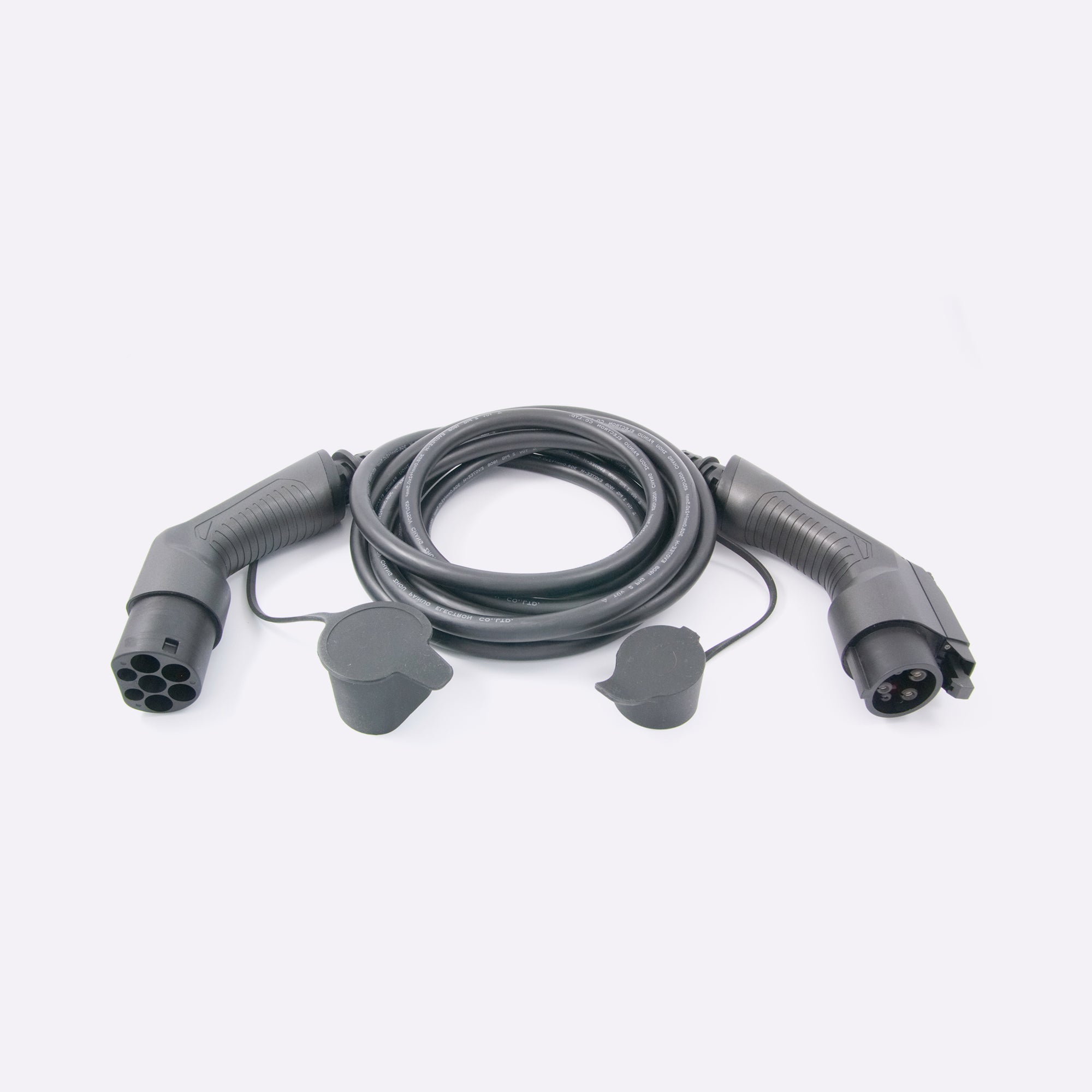
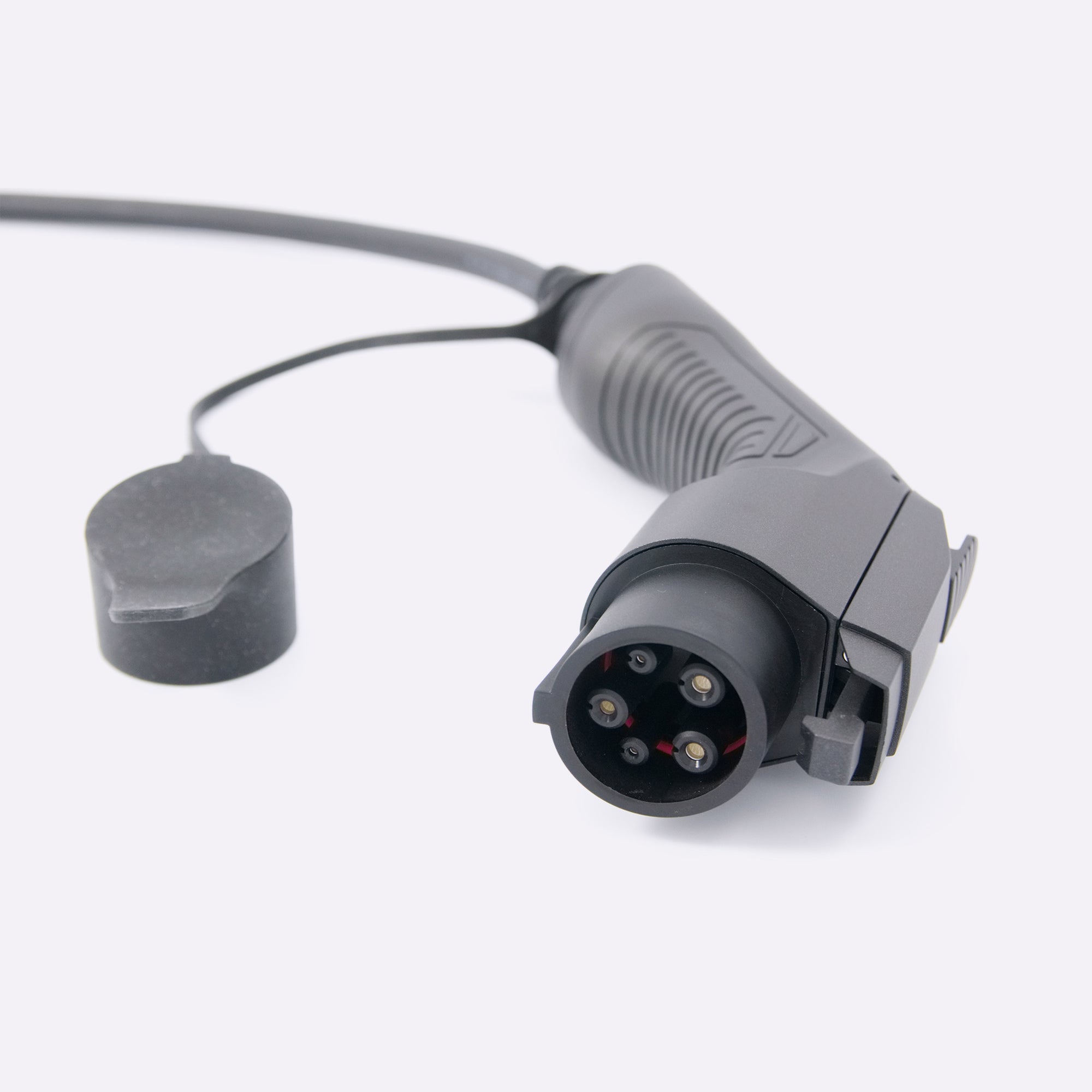
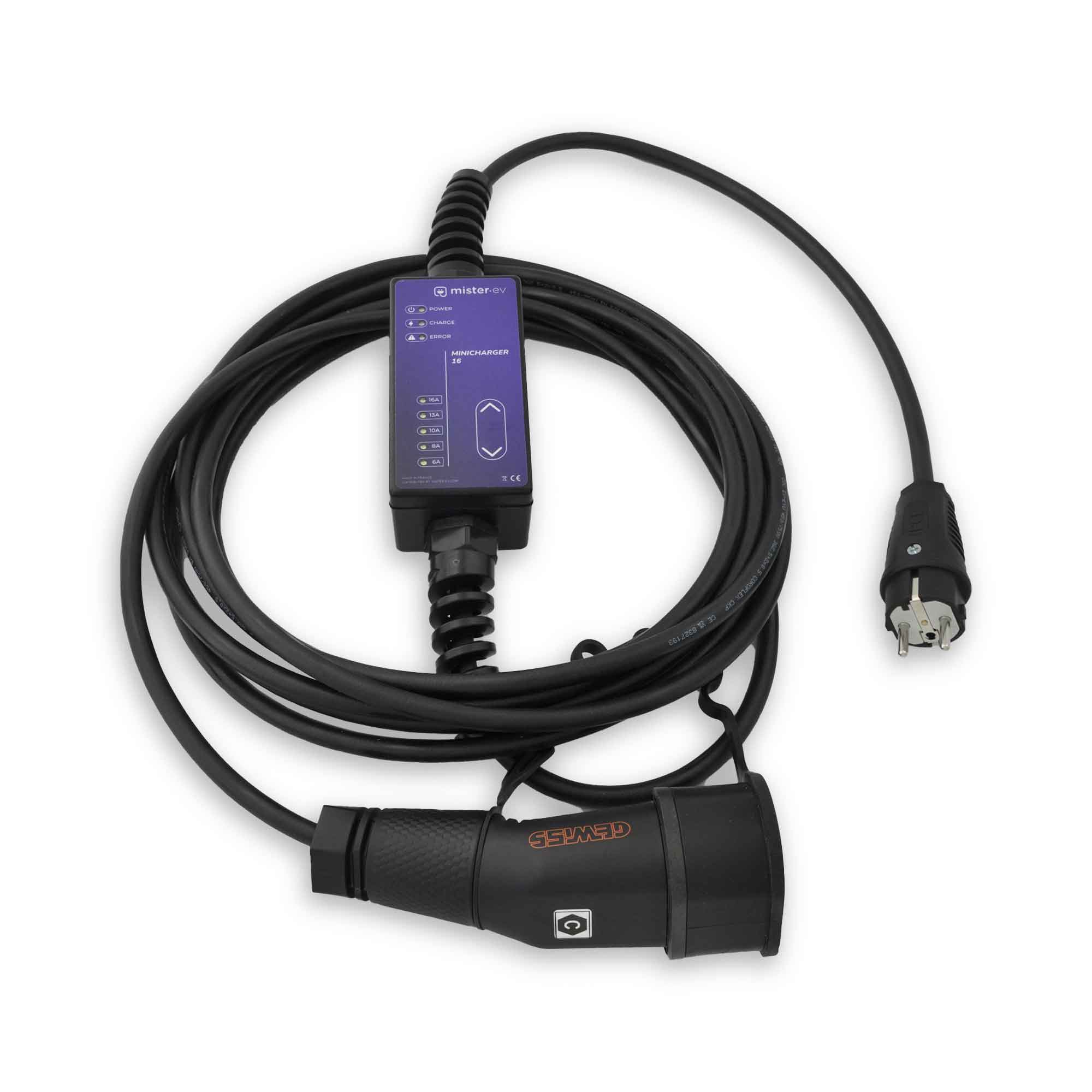
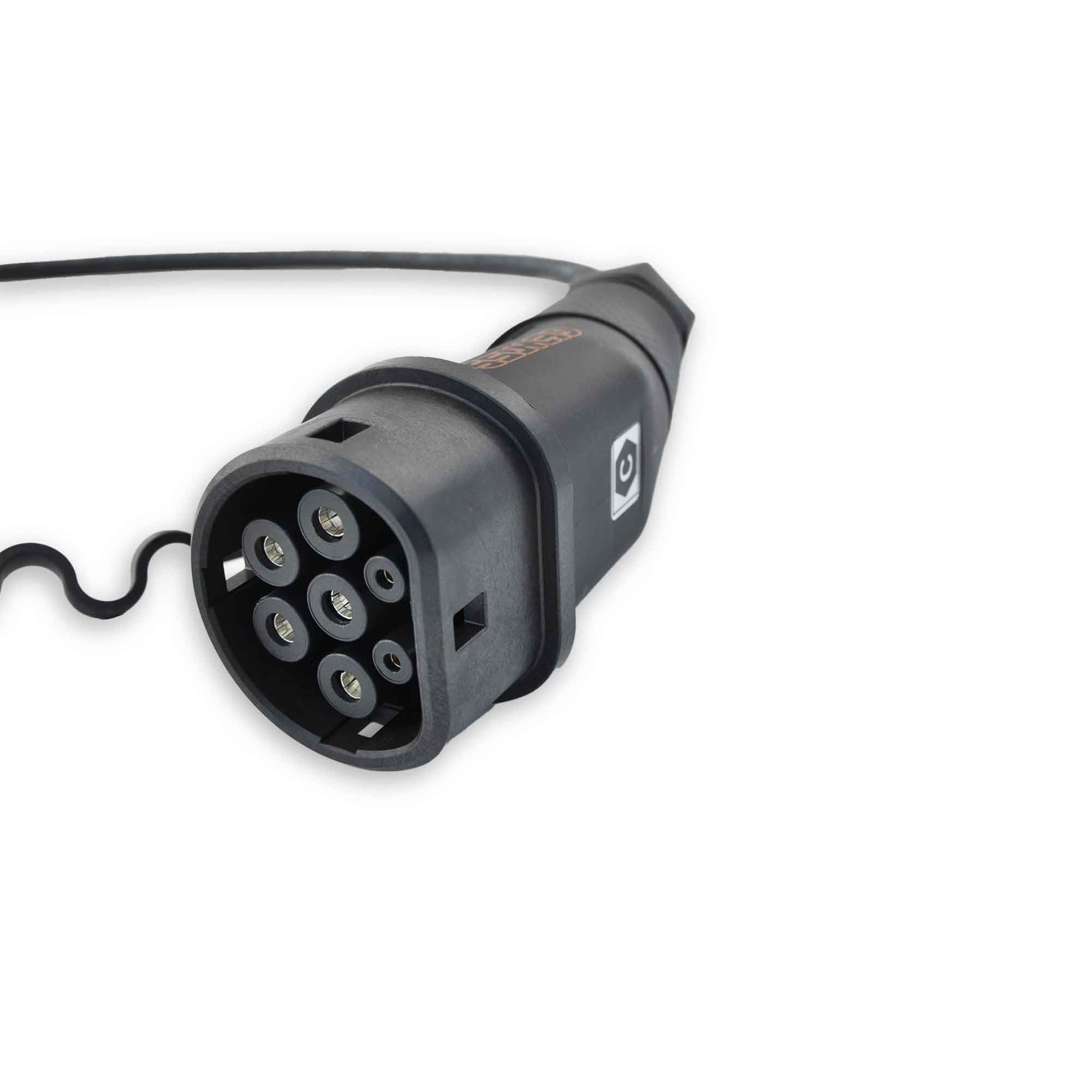

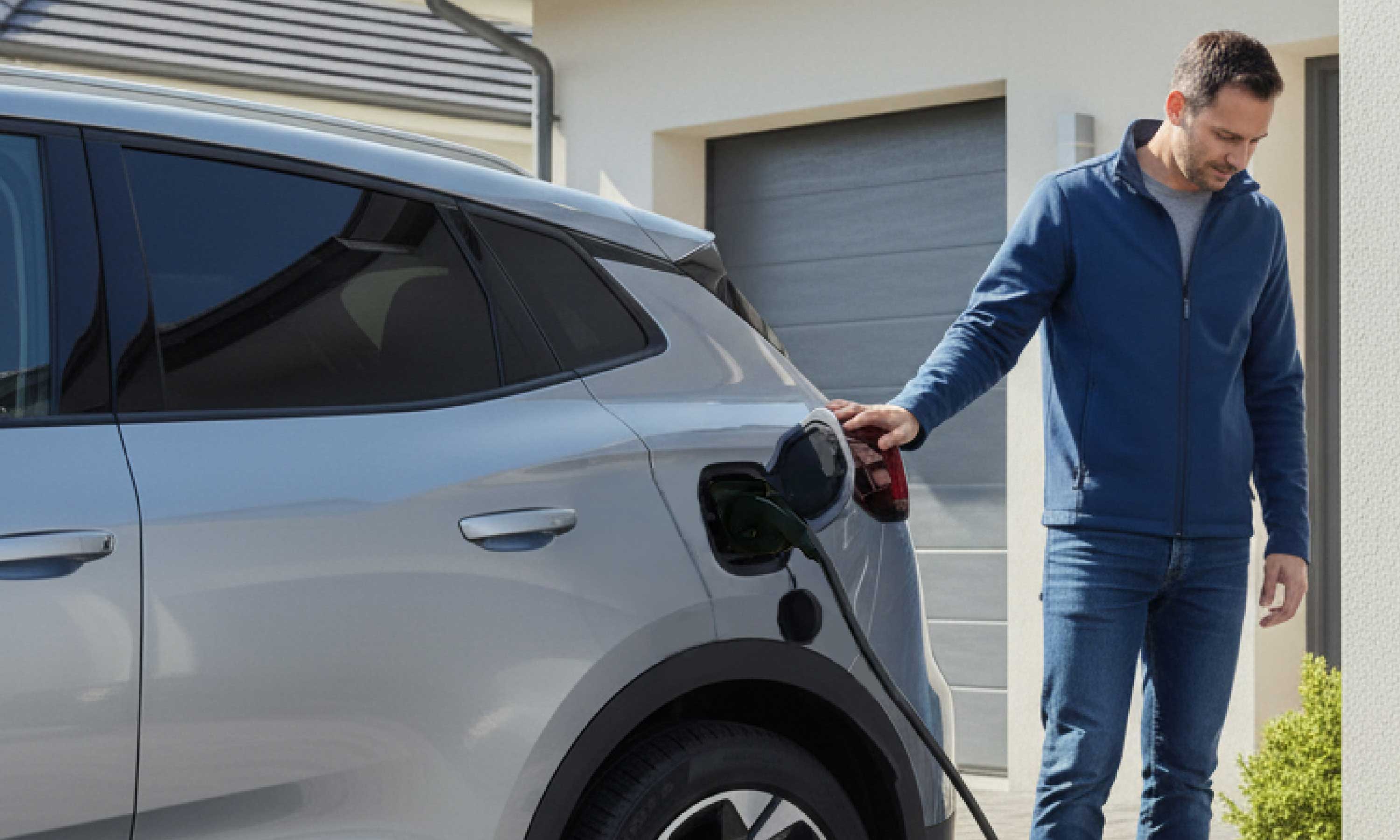
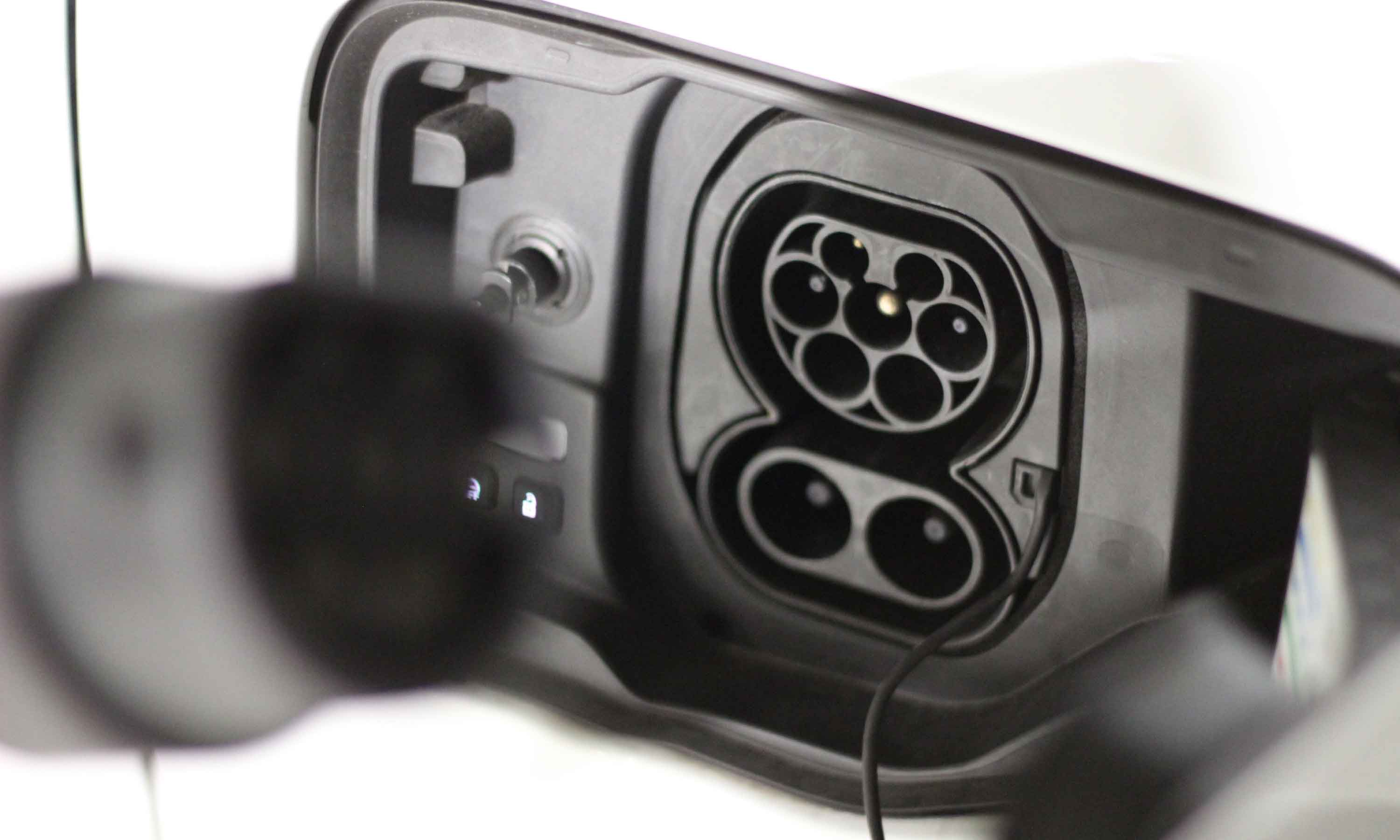
@Jean-Marc : En effet, sur une installation monophasée, comme celle de votre borne 7,4kW, un câble Triphasé 11kW ne vous permettra pas de bénéficier de la pleine puissance de la borne. La limitation viens bien du courant limite que supporte votre câble.
Afin de solutionner le problème et pour plus de polyvalence, nous vous conseillons d’opter pour un câble Triphasé 22kW.
Bonjour,
J’ai un câble T2 11kW 16A pour recharger au boulot.
Je viens d’avoir ma borne en copro, 7,4kW. Avec mon câble 11kW je plafonne à 4,6kW, est-ce que c’est à cause de l’ampérage 16 vs 32?
Quel câble acheter dans mon cas afin que je sois optimal sur les 2 bornes 11 et 7,4kW?
Merci d’avance.
@Carlos : Bonjour Carlos, il n’y’a pas de risque électrique particulier à laisser le câble connecté à la borne entre deux recharge. En effet, sans communication avec un véhicule, le courant est physiquement coupé, il n’y’a pas de tension sur le connecteur.
En revanche, si le câble est en extérieur, il peut-être intéressant de l’équiper d’un support mural antivol comme celui que vous trouverez ici : https://www.mister-ev.com/products/support-mural-de-cable-type-2-antivol
En effet, à quelques exceptions près, toutes les bornes du marché déverrouillent le câble une fois la recharge interrompue, donc n’importe qui peut prendre votre câble si il n’est pas protégé.
Bonjour,
Est-il nécessaire de débrancher systématiquement le câble côté source entre deux charges du véhicule ou peut-on le laisser brancher “en attente” sans risque ?
Bonjour, votre article est bien monté, hélas je ne comprends pas bien le mode 2, mode 3, sauriez-vous m’en dire plus ou me rediriger vers une page explicite ?
Leave a comment